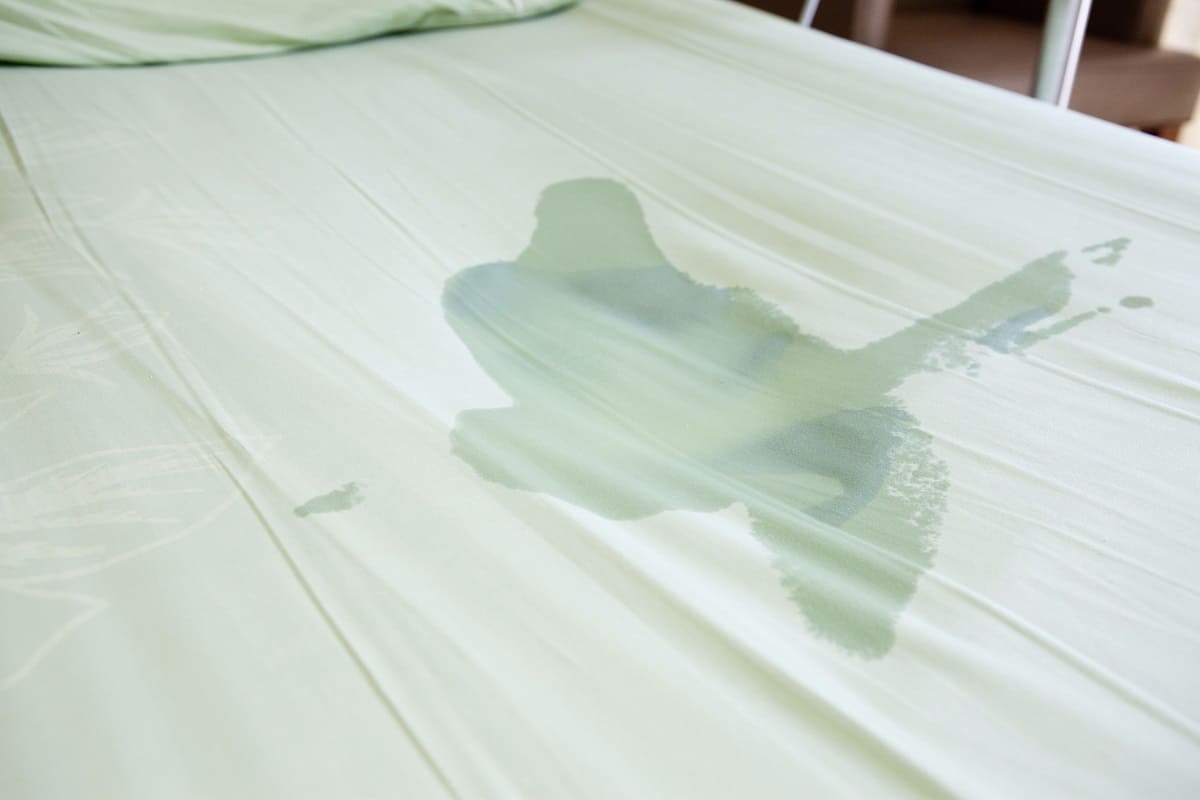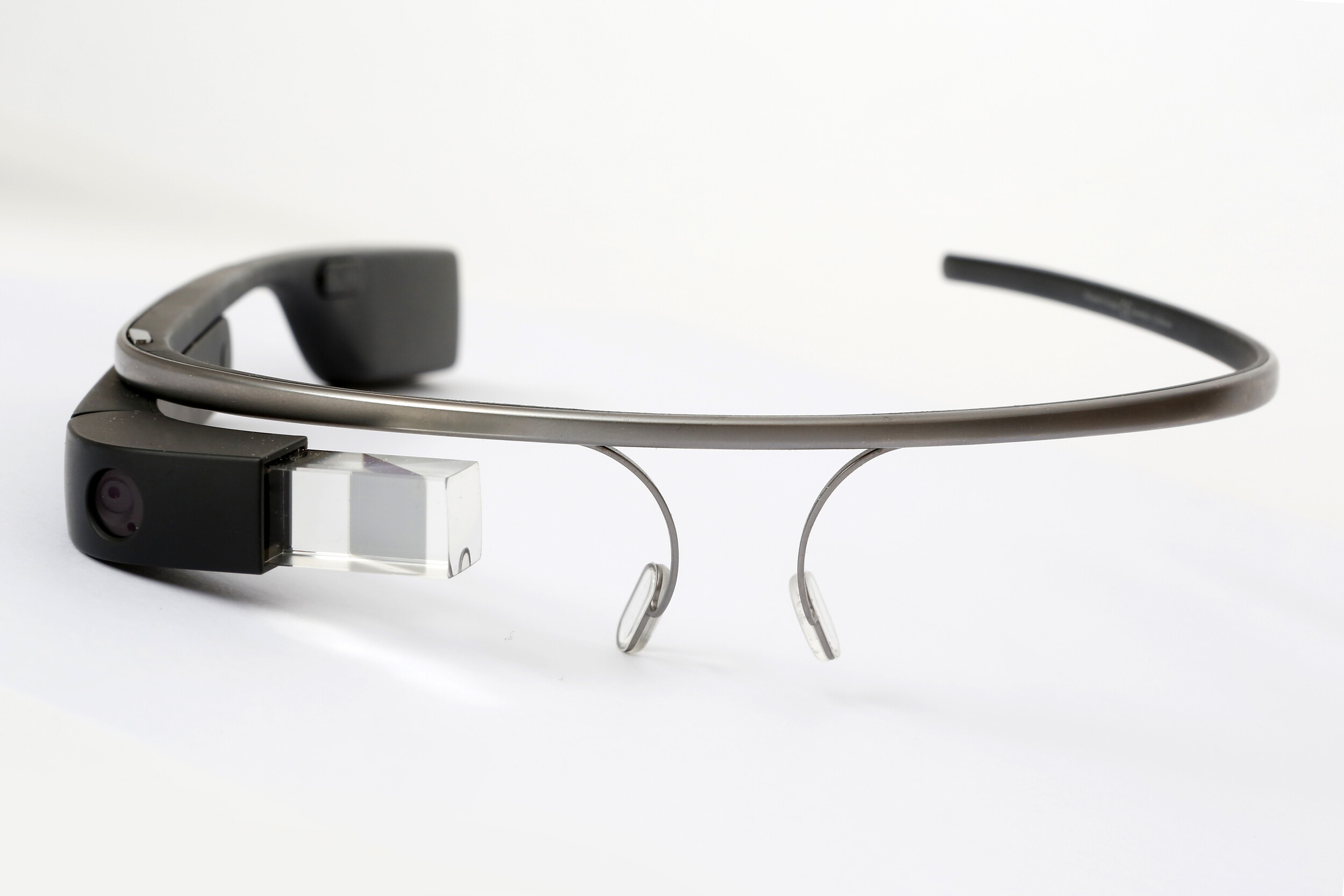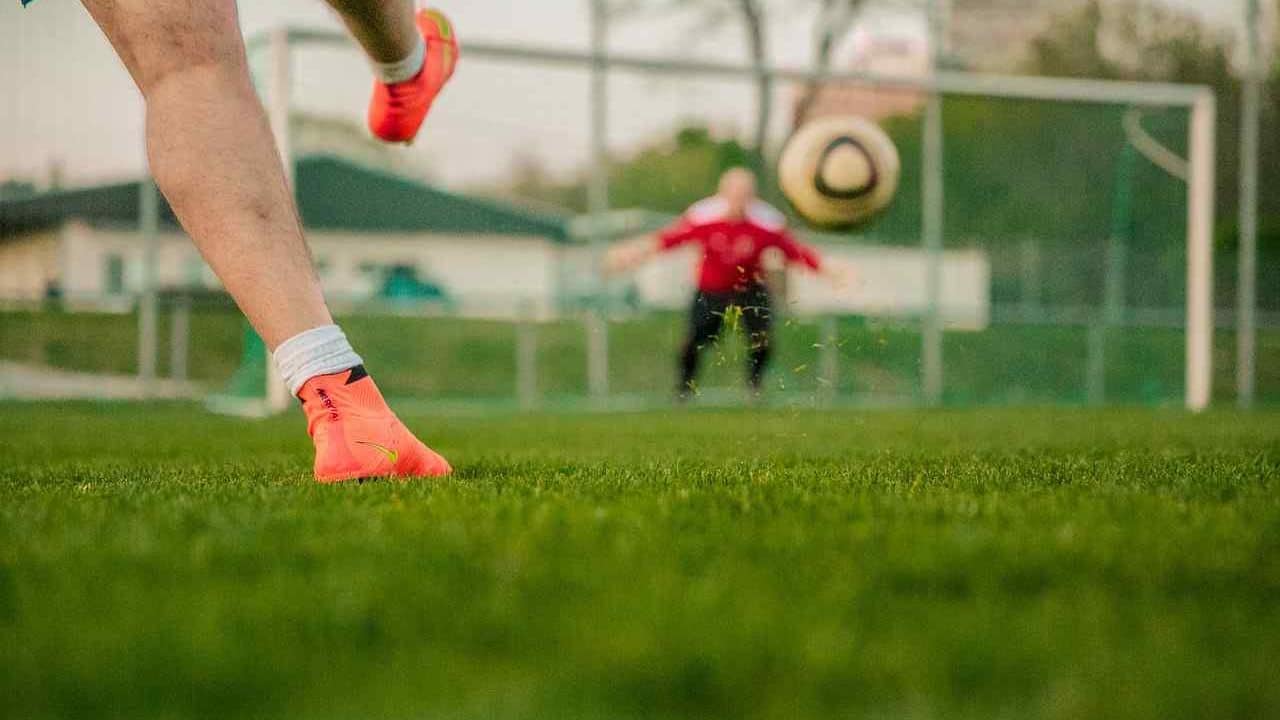Home>Furniture>Bedroom Furniture>Why Did I Wet The Bed


Bedroom Furniture
Why Did I Wet The Bed
Modified: January 5, 2024
Discover the reasons behind bedwetting and explore effective solutions. Upgrade your bedroom furniture for a comfortable and supportive sleep environment.
(Many of the links in this article redirect to a specific reviewed product. Your purchase of these products through affiliate links helps to generate commission for Storables.com, at no extra cost. Learn more)
Introduction: Understanding Bedwetting
Bedwetting, also known as nocturnal enuresis, is a common condition that affects both children and adults. It refers to the involuntary release of urine during sleep, leading to wetting the bed. While it is a widespread issue, it can cause embarrassment, frustration, and anxiety for those who experience it.
Bedwetting is particularly common among young children, with around 15-20% of five-year-olds still wetting the bed on occasion. However, it can persist into adolescence and adulthood, affecting approximately 1-2% of adults.
Understanding the causes of bedwetting is crucial in order to effectively manage and treat the condition. While it may be a source of distress, it is vital to remember that bedwetting is often a temporary, treatable condition. With the right approach, it is possible to overcome bedwetting and restore confidence and peace of mind.
In this article, we will explore the common causes of bedwetting, from physical factors to medical conditions, psychological factors, and developmental factors. Furthermore, we will delve into the various treatment options available, ranging from bedwetting alarms to medication, behavioral strategies, and protective measures.
By gaining a better understanding of bedwetting and its underlying causes, we can work towards finding the most suitable solutions to effectively manage this condition. Let’s delve deeper into the various factors that contribute to bedwetting and explore the available treatment options.
Key Takeaways:
- Understanding the causes of bedwetting, from physical factors to medical conditions, psychological factors, and developmental factors, is crucial for effective management and treatment. By exploring various treatment options, individuals can overcome bedwetting and restore confidence and peace of mind.
- Bedwetting alarms, medication, behavioral strategies, and protective measures offer effective solutions for managing bedwetting. Creating a supportive environment, maintaining open communication, and involving healthcare professionals are essential for successful treatment. With perseverance and a comprehensive approach, individuals can gradually overcome bedwetting and restore confidence and peace of mind.
Read more: Why Do Children Wet The Bed
Common Causes
Bedwetting can have various causes, ranging from physical factors to medical conditions, psychological factors, and developmental factors. Understanding these causes can help identify the appropriate treatment approach. Let’s explore the common causes of bedwetting:
Physical Factors:
Some individuals may have a smaller bladder capacity or difficulty holding urine for an extended period. Additionally, the body’s production of antidiuretic hormone, which helps regulate urine production at night, may be insufficient, leading to increased urine production during sleep.
Medical Conditions:
Medical conditions such as urinary tract infections, constipation, and diabetes can contribute to bedwetting. In children, structural abnormalities in the urinary tract or the central nervous system can also be a factor. It is essential to consult with a healthcare professional to rule out any underlying medical conditions that may be causing bedwetting.
Psychological Factors:
Psychological factors such as stress, anxiety, or emotional disturbances can trigger bedwetting episodes. Significant life changes, such as the birth of a sibling, starting a new school, or family issues, can contribute to bedwetting. Addressing these emotional factors through therapy or counseling can help alleviate bedwetting in some cases.
Read more: Why Did Beds Have Curtains
Developmental Factors:
Bedwetting is often considered a developmental delay, as the ability to control the bladder during sleep gradually develops over time. It is a natural part of a child’s growth process, and most children outgrow bedwetting as they acquire better bladder control.
It is important to remember that bedwetting is not typically caused by laziness, stubbornness, or a lack of motivation. It is a result of various factors, and blaming the individual for their bedwetting can lead to feelings of guilt and shame.
By understanding the common causes of bedwetting, individuals and their families can seek appropriate treatment options and support to effectively manage this condition. In the following sections, we will explore a range of treatment options that can help individuals overcome bedwetting and improve their quality of life.
Physical Factors
Physical factors play a significant role in bedwetting. These factors can include bladder capacity, the production of antidiuretic hormone, and the ability to hold urine for an extended period. By understanding these physical factors, we can gain insights into why bedwetting occurs and how to manage it effectively.
Bladder Capacity: One of the primary physical factors contributing to bedwetting is bladder capacity. Some individuals may have a smaller bladder, which means it can hold less urine. This can lead to more frequent trips to the bathroom during the day and potentially bedwetting at night. Increasing bladder capacity can be achieved through various techniques, such as bladder training exercises and gradually increasing the time between bathroom visits.
Antidiuretic Hormone (ADH) Production: Antidiuretic hormone, also known as ADH or vasopressin, is a hormone that helps regulate urine production. During the night, the body naturally releases more ADH, which reduces urine production and helps individuals stay dry while sleeping. In individuals with bedwetting issues, there may be an inadequate production or response to ADH, resulting in increased urine production during sleep. In some cases, medication can be prescribed to enhance ADH production or response, reducing bedwetting incidents.
Difficulty Holding Urine: Some individuals may experience difficulty holding urine for an extended period, even if their bladder capacity is normal. This can lead to bedwetting as the bladder becomes full and the individual is unable to wake up in time to use the restroom. Strengthening the pelvic floor muscles through exercises, such as Kegels, can help improve the ability to hold urine and reduce bedwetting episodes.
It is important to note that physical factors alone may not be the sole cause of bedwetting. Bedwetting can also be influenced by various other factors, including medical conditions, psychological factors, and developmental factors. Identifying and addressing the underlying physical factors can be a step towards effectively managing bedwetting. However, it is crucial to consult with a healthcare professional to determine the best course of action and rule out any underlying medical conditions. By addressing these physical factors and exploring appropriate treatment options, individuals can work towards overcoming bedwetting and enjoying a peaceful night’s sleep.
Medical Conditions
Bedwetting can sometimes be linked to underlying medical conditions that contribute to the inability to control the bladder during sleep. Understanding these medical conditions can help determine appropriate treatment options. Here are some of the medical conditions commonly associated with bedwetting:
Urinary Tract Infections (UTIs):
A urinary tract infection occurs when bacteria enter the urinary tract and cause infection. UTIs can irritate the bladder and interfere with its normal functioning, leading to bedwetting. Symptoms of a UTI may include frequent urination, pain or burning sensation during urination, and cloudy or bloody urine. Treating the underlying UTI with appropriate antibiotics can help resolve the bedwetting issue in these cases.
Read more: How To Clean A Wet Bed
Constipation:
Chronic constipation can put pressure on the bladder, affecting its capacity and causing bedwetting. When the rectum is full of stool, it can disrupt the normal functioning of the bladder. Treating constipation through dietary changes, increased fluid intake, and appropriate laxatives if necessary, can help alleviate the bedwetting problem in these cases.
Diabetes:
In individuals with diabetes, high blood sugar levels can cause increased urine production, leading to more frequent trips to the bathroom and potential bedwetting at night. Proper management of diabetes through medication, dietary changes, and blood sugar monitoring can help control bedwetting in these cases.
Structural Abnormalities:
In some cases, structural abnormalities in the urinary tract or the central nervous system can contribute to bedwetting. These abnormalities may include a small or malfunctioning bladder, an obstruction in the urinary tract, or an issue with the nerves responsible for bladder control. Medical interventions such as surgery or specialized treatments may be necessary to address these structural abnormalities and resolve bedwetting.
If bedwetting is suspected to be caused by an underlying medical condition, it is essential to consult with a healthcare professional for a proper diagnosis and appropriate treatment. Overall, identifying and treating these medical conditions can play a significant role in successfully managing bedwetting and improving the quality of life for individuals experiencing this issue.
Psychological Factors
While bedwetting is often considered a physical issue, psychological factors can also contribute to the condition. Emotional stress, anxiety, and other psychological disturbances can trigger bedwetting episodes. Recognizing and addressing these factors is crucial for effective management of bedwetting. Here are some common psychological factors associated with bedwetting:
Read more: Why Am I Feeling Itchy In Bed
Stress and Anxiety:
Stressful life events, such as family problems, changes in routine, or academic pressures, can contribute to bedwetting. Feelings of stress and anxiety can affect the body’s ability to relax and sleep peacefully, leading to bedwetting episodes. Identifying and managing sources of stress and anxiety, through therapy, counseling, or relaxation techniques, can help reduce bedwetting incidents.
Emotional Disturbances:
Emotional disturbances, such as feelings of sadness, fear, or insecurity, can trigger bedwetting in some individuals. This can be particularly common in children who are experiencing significant life changes or difficulties. Providing emotional support, creating a nurturing environment, and encouraging open communication can help alleviate psychological factors contributing to bedwetting.
Trauma or Abuse:
In some cases, bedwetting can be associated with past traumatic experiences or instances of abuse. Trauma can affect sleep patterns, increase anxiety, and lead to bedwetting episodes. In these situations, it is essential to seek professional help and therapy to address the underlying trauma and provide support for the individual.
Self-esteem and Social Pressure:
Bedwetting can have a significant impact on self-esteem and lead to social pressure, particularly in older children and adults. Fear of judgment or embarrassment can intensify the psychological factors contributing to bedwetting. Supportive and understanding environments, along with counseling or support groups, can help individuals cope with the emotional aspects of bedwetting and regain confidence.
Addressing the psychological factors associated with bedwetting is crucial for a holistic approach to treatment. Therapy, counseling, stress management techniques, and creating supportive environments can help individuals manage bedwetting alongside physical interventions. By addressing the psychological aspects, individuals can develop strategies to cope with stress, anxiety, and emotional disturbances, leading to improved quality of sleep and decreased bedwetting episodes.
Read more: What Causes Bed-Wetting In Adults
Developmental Factors
Bedwetting is often considered a developmental issue, as bladder control during sleep gradually develops over time. Understanding the developmental factors associated with bedwetting can provide insights into why it occurs and when it is likely to improve. Here are some common developmental factors related to bedwetting:
Maturity of the Bladder:
Bladder control during sleep is a skill that develops at different rates for each individual. Some children may develop nighttime bladder control earlier than others. It is essential to remember that bedwetting is a normal part of development and that most children eventually outgrow it. Patience and understanding are key during this phase.
Incomplete Nervous System Development:
During childhood, the nerves that connect the bladder to the brain are still developing. This means that the signals responsible for waking up to use the bathroom may not yet be fully established. As the nervous system matures, children gain better control over their bladder during sleep, resulting in a reduction in bedwetting incidents.
Hormonal Factors:
The production of antidiuretic hormone (ADH), which helps regulate urine production, is still maturing in young children. Some children may produce less ADH during the night, leading to increased urine production and bedwetting. As the hormone production regulates, bedwetting episodes often decrease.
Read more: How To Clean Mattress After Bed Wetting
Genetics:
There is evidence to suggest that bedwetting can run in families. If one or both parents experienced bedwetting as children, there is a higher likelihood that their child may also wet the bed. However, genetics alone do not determine bedwetting, and it can still occur even if there is no family history.
It is important to approach bedwetting as a developmental issue rather than a behavior that needs to be punished or corrected. Most children will naturally outgrow bedwetting as they reach developmental milestones and acquire better bladder control. Encouraging a supportive and understanding environment can greatly contribute to a child’s self-esteem and confidence as they navigate this stage of development.
For older children and adults who continue to experience bedwetting, developmental factors may still play a role. Working with a healthcare professional to identify any underlying factors and develop a tailored treatment plan is essential. By acknowledging the developmental aspects of bedwetting, we can provide the necessary support and understanding needed for individuals to conquer this common issue.
Treatment Options
Bedwetting is a common condition that can be effectively managed and treated. There are several treatment options available to help individuals overcome bedwetting and improve their quality of life. These options range from behavioral strategies to medication and protective measures. Let’s explore some of the treatment options in detail:
Bedwetting Alarms:
Bedwetting alarms are devices that sense moisture and alert the individual when they begin to wet the bed. These alarms are designed to train the individual to recognize the sensation of a full bladder and wake up to use the bathroom. Over time, the alarm helps to condition the individual’s response and develop better bladder control during sleep. Bedwetting alarms have shown to be effective in reducing bedwetting incidents.
Medication:
In certain cases, medications may be prescribed to help manage bedwetting. Desmopressin is a medication that mimics the effects of antidiuretic hormone (ADH) and reduces urine production during sleep. This medication can be particularly helpful in situations where a lack of ADH production or response is contributing to bedwetting. However, it is important to consult with a healthcare professional before starting any medication, as they can determine if it is appropriate and safe for the individual.
Read more: Why Is The Grass Always Wet In The Morning
Behavioral Strategies:
Behavioral strategies can be effective in managing bedwetting. These strategies include implementing a regular bathroom routine before bedtime, reducing fluid intake before bed, and using positive reinforcement systems such as reward charts or praise for dry nights. Additionally, bladder training exercises and relaxation techniques can help individuals develop better control over their bladder and reduce bedwetting incidents.
Protective Measures:
Using protective measures can help individuals manage the impact of bedwetting. This can include using absorbent undergarments or mattress protectors to minimize the discomfort and inconvenience of wetting the bed. Having spare bedding readily available can also make the cleanup process easier and less disruptive during the night.
It is important to note that each individual is unique, and the most effective treatment option may vary. Consulting with a healthcare professional or a specialist in bedwetting can provide personalized advice and guidance. They can evaluate the individual’s specific circumstances, identify any underlying causes, and recommend the most suitable treatment approach.
Remember, it is essential to approach bedwetting with patience, understanding, and support. Creating a supportive environment and maintaining open communication can greatly assist individuals of all ages in successfully managing bedwetting and improving their quality of life.
Bedwetting Alarms
Bedwetting alarms are a widely used and effective treatment option for managing bedwetting, also known as nocturnal enuresis. These devices are designed to help individuals of all ages recognize the sensation of a full bladder and wake up to use the bathroom, ultimately conditioning them to develop better bladder control during sleep. Let’s delve into the details of how bedwetting alarms work and their benefits:
How do bedwetting alarms work?
Bedwetting alarms consist of a moisture-detecting sensor and an alarm unit. The sensor is placed in the individual’s undergarments or attached to a pad on the bed. As soon as it detects moisture, it triggers the alarm unit, which can be a loud sound, vibration, or a combination of both. The purpose of the alarm is to awaken the individual when they begin to wet the bed, conditioning them to wake up and empty their bladder.
Benefits of bedwetting alarms:
- Effective and long-lasting: Bedwetting alarms have proven to be highly effective in reducing and even eliminating bedwetting incidents. They address the underlying cause of the problem by helping individuals become more aware of their bladder signals and develop better nighttime control.
- Safe and non-invasive: Bedwetting alarms are safe to use and do not require any medications or invasive procedures. They rely on natural conditioning to train individuals to recognize the need to use the bathroom independently.
- Personalized approach: Bedwetting alarms allow for a personalized approach to treatment. The alarm settings can be adjusted to suit each individual’s preferences, such as adjusting the volume or sound type. This customization ensures a comfortable and effective experience for the user.
- Positive reinforcement: Bedwetting alarms provide an opportunity for positive reinforcement. Reward systems, such as sticker charts or small incentives, can be utilized to celebrate dry nights and encourage progress. This positive reinforcement helps motivate individuals and boosts self-esteem during the treatment process.
Tips for using bedwetting alarms effectively:
- Consistency is key. Encourage the individual to use the bedwetting alarm every night consistently for optimal results.
- Involve the individual in the process. In order to build motivation and ownership, involve the individual in selecting and setting up the bedwetting alarm.
- Create a supportive environment. Ensure the individual feels comfortable and supported throughout the treatment process. Discussing any concerns or challenges that arise and offering encouragement can make a significant difference.
- Monitor progress. Keep track of the individual’s progress by maintaining a record of dry nights and discussing any setbacks or improvements during follow-up appointments with a healthcare professional.
It is important to note that while bedwetting alarms are highly effective, they may not provide immediate results. It may take several weeks or months of consistent use for individuals to achieve dry nights consistently. Patience, persistence, and support are crucial during this process.
Consulting with a healthcare professional or a specialist in bedwetting can provide further guidance on selecting and using a bedwetting alarm effectively for the specific needs of the individual. By integrating bedwetting alarms into a comprehensive treatment plan, individuals can gain control over their bedwetting and achieve long-lasting results, leading to improved sleep and increased confidence.
Medication
Medication can be a viable option for individuals who experience bedwetting, especially when other treatment methods have not yielded desired results. Although it is important to consult with a healthcare professional before considering medication, there are a few options available that may help manage bedwetting. Let’s explore some commonly used medications for bedwetting:
Desmopressin: Desmopressin is a synthetic form of the hormone vasopressin, which plays a role in regulating urine production. It works by reducing the amount of urine produced during sleep. Desmopressin can be delivered as a nasal spray, orally disintegrating tablet, or as a tablet taken orally. The medication is typically used for a specific duration while the individual learns to gain better control over their bladder. It is important to note that desmopressin does not correct the underlying cause of bedwetting and that its effectiveness may vary from person to person.
Anticholinergic Medications: Anticholinergic medications, such as oxybutynin or tolterodine, can be prescribed to help relax the bladder muscles and increase bladder capacity. By reducing bladder contractions and increasing the ability to hold urine, these medications can assist individuals in managing bedwetting. However, anticholinergic medications may be associated with side effects, such as dry mouth, constipation, and blurred vision. Therefore, it is essential to consult with a healthcare professional to determine if the benefits outweigh the potential risks.
Other Medications: In some cases, other medications, such as imipramine, may be prescribed to manage bedwetting. Imipramine is an antidepressant that has shown effectiveness in reducing bedwetting incidents. However, like any medication, it may have potential side effects, so it should be used under medical supervision and with caution.
Remember, medication should not be the primary or sole treatment for bedwetting. It is important to consider medication as part of a comprehensive treatment plan that may also include behavioral strategies, lifestyle modifications, and supportive measures. Medication may be particularly useful in situations where there is a specific hormonal or physiological issue contributing to bedwetting.
It is crucial to consult with a healthcare professional before starting any medication for bedwetting. They will assess the individual’s medical history, conduct a thorough evaluation, and determine the most appropriate course of treatment. Additionally, healthcare professionals can provide guidance on the duration and monitoring of medication use, as well as address any concerns or potential side effects.
Overall, medication can be a valuable tool in managing bedwetting, particularly when used in combination with other treatment methods. By working closely with a healthcare professional, individuals and their families can make informed decisions and choose the most suitable approach to help manage and overcome bedwetting successfully.
Read more: Why Is My Car Floor Wet
Behavioral Strategies
Behavioral strategies play a fundamental role in managing bedwetting, offering individuals practical techniques to improve bladder control and reduce nighttime accidents. These strategies focus on developing healthy habits, regular routines, and implementing positive reinforcement. Here are some effective behavioral strategies to consider:
Establish a Regular Bathroom Routine:
Encourage individuals to establish a consistent bathroom routine, including a final trip to the restroom before bed. This helps empty the bladder and reduces the likelihood of needing to urinate during the night. Consistency is key to reinforce the habit and improve bladder control.
Limit Fluid Intake Before Bedtime:
Encourage individuals to consume an adequate amount of fluids during the day but limit their intake in the hours leading up to bedtime. This helps reduce the volume of urine produced during sleep and decreases the chances of bedwetting incidents.
Encourage Voiding Throughout the Day:
Encourage individuals to regularly empty their bladder throughout the day, ensuring they are not holding in urine for extended periods. This helps promote a healthier bladder and improves the individual’s ability to hold urine during sleep.
Read more: Why Is My Mattress Wet Underneath
Implement Positive Reinforcement:
Reward systems can be highly effective in motivating individuals to stay dry through the night. Consider using a reward chart and providing small incentives or tokens for each dry night achieved. Celebrate milestones and successes to maintain motivation and boost self-esteem.
Use Bedwetting Alarms:
Bedwetting alarms, as mentioned earlier, are valuable behavioral tools. They condition individuals to recognize the sensation of a full bladder and wake up to use the bathroom independently. Consistent use of bedwetting alarms can lead to improved bladder control and reduced bedwetting incidents over time.
Implement Relaxation Techniques:
Teach individuals relaxation techniques, such as deep breathing exercises or guided imagery, to help reduce anxiety and promote a calm state of mind before bed. Stress and anxiety can contribute to bedwetting, so practicing relaxation techniques can help improve bladder control during sleep.
Remember, each individual is unique, and it may be necessary to experiment with different behavioral strategies to identify the most effective approach. It is important to approach behavioral strategies with patience, consistency, and positive reinforcement. Keep in mind that it may take time for the strategies to take effect, and setbacks may occur along the way.
Working with a healthcare professional or specialist in bedwetting can provide additional guidance and support in implementing behavioral strategies. They can help tailor an approach that suits the individual’s specific needs and monitor progress throughout the treatment process.
By incorporating behavioral strategies into a comprehensive treatment plan, individuals can develop better bladder control, reduce bedwetting incidents, and regain confidence and independence in managing their bedtime routine.
Protective Measures
Protective measures are essential in managing bedwetting, providing individuals with practical solutions to minimize the discomfort and inconvenience of wetting the bed. These measures aim to protect bedding, promote cleanliness, and boost confidence. Here are some effective protective measures to consider:
Read more: Why Is The Inside Of My Dryer Wet
Absorbent Undergarments:
Using absorbent undergarments, such as disposable diapers or absorbent pants, can help manage bedwetting incidents. These undergarments are designed to quickly absorb urine and keep the individual dry throughout the night. They provide peace of mind, prevent the need for frequent bedding changes, and minimize the impact of bedwetting on sleep quality.
Mattress Protectors:
Mattress protectors act as a barrier between the bedwetter and the mattress, preventing urine from seeping through. Waterproof mattress protectors are available in various sizes and designs, ensuring a comfortable and secure fit. These protectors are easily washed or replaced, making clean-up more manageable and protecting the longevity of the mattress.
Spare Bedding:
Having spare bedding readily available is crucial in case of bedwetting incidents. Keep spare sheets, blankets, and pajamas nearby, allowing for quick and easy changes during the night. This reduces the disruption to sleep and promotes a more seamless bedtime routine for both children and adults.
Discreet Pads or Layers:
For older individuals who may feel self-conscious about using traditional bedwetting products, discreet pads or layers can be utilized. These thin, waterproof pads can be placed on top of the bedding, providing an extra layer of protection without being noticeable. They help absorb moisture and can be easily removed and replaced as needed.
Read more: Can I Mow Grass When Wet
Open Communication and Support:
Creating an environment of open communication and support is essential in managing bedwetting. Encourage individuals to discuss their concerns and feelings without judgment. Offer reassurance, emphasize that bedwetting is a common issue, and remind them that it is not their fault. This support helps maintain self-esteem and a positive mindset throughout the treatment process.
It is important to remember that protective measures should not replace or discourage other treatment options, such as behavioral strategies or medical interventions. Instead, they provide a practical solution to manage the immediate effects of bedwetting and promote comfort and cleanliness.
Working with a healthcare professional or specialist in bedwetting can provide personalized advice on protective measures and how to incorporate them into a comprehensive treatment plan. They can guide individuals and their families in selecting the most suitable products and provide additional support and resources.
By implementing protective measures, individuals can feel more secure and confident in managing bedwetting incidents, ensuring a comfortable and uninterrupted night’s sleep.
Conclusion: Managing Bedwetting
Bedwetting, or nocturnal enuresis, is a common condition that can have a significant impact on individuals and their families. However, it is important to remember that bedwetting is often a temporary and treatable issue. By understanding the causes and exploring various treatment options, individuals can successfully manage bedwetting and gradually overcome it.
In this article, we have discussed the common causes of bedwetting, including physical factors, medical conditions, psychological factors, and developmental factors. We have explored treatment options such as bedwetting alarms, medication, behavioral strategies, and protective measures.
Bedwetting alarms have proven to be highly effective by conditioning individuals to recognize the sensation of a full bladder and wake up to use the bathroom. Medications may be prescribed in certain cases to address hormonal or physiological issues contributing to bedwetting. Behavioral strategies, such as establishing regular bathroom routines, limiting fluid intake before bed, and using positive reinforcement, can help individuals develop better bladder control. Protective measures, like absorbent undergarments, mattress protectors, and spare bedding, offer practical solutions to manage bedwetting incidents and promote cleanliness.
It is crucial to approach bedwetting with patience, understanding, and support. Creating a supportive environment, maintaining open communication, and involving healthcare professionals can make a significant difference in successfully managing bedwetting. Remember that each individual’s journey will be unique, and there may be setbacks along the way. However, with perseverance and a comprehensive treatment plan, individuals can gradually overcome bedwetting and restore confidence and peace of mind.
If bedwetting persists or significantly affects an individual’s quality of life, it is important to consult with a healthcare professional or specialist in bedwetting. They can provide personalized guidance, further evaluate the underlying factors contributing to bedwetting, and offer tailored treatment options.
By embracing a holistic approach that combines various treatment strategies, individuals can take control of bedwetting, improve their sleep quality, and regain the confidence and freedom to enjoy peaceful nights without the worry of wetting the bed.
Frequently Asked Questions about Why Did I Wet The Bed
Was this page helpful?
At Storables.com, we guarantee accurate and reliable information. Our content, validated by Expert Board Contributors, is crafted following stringent Editorial Policies. We're committed to providing you with well-researched, expert-backed insights for all your informational needs.





